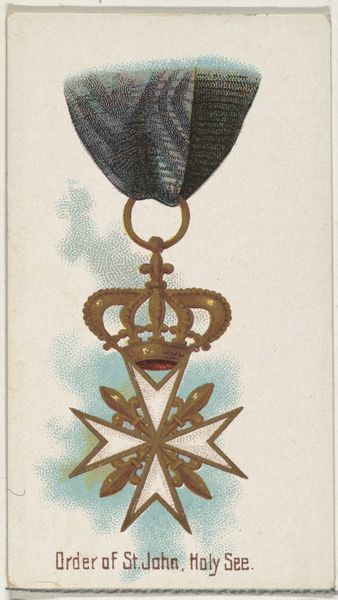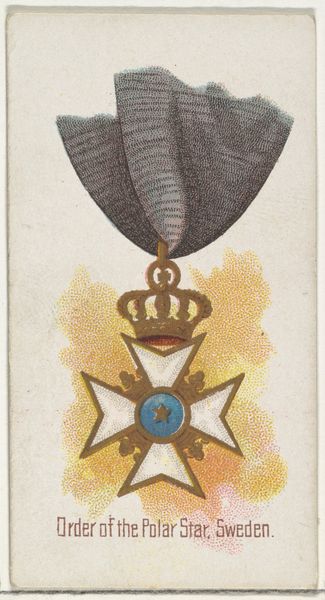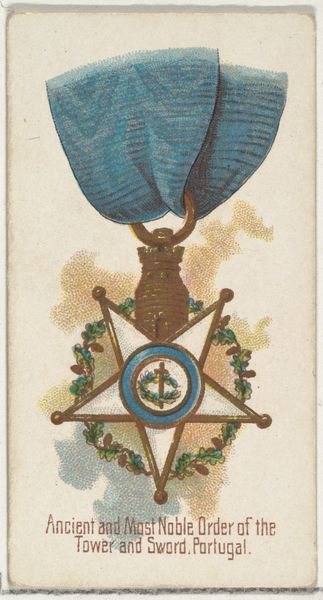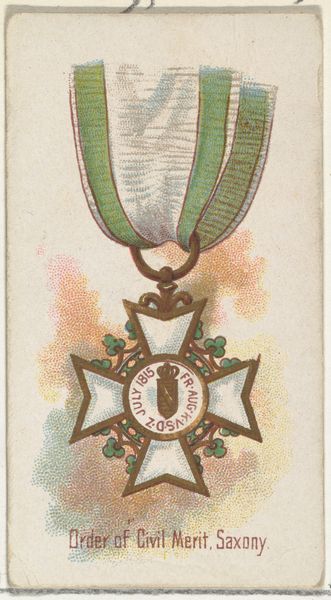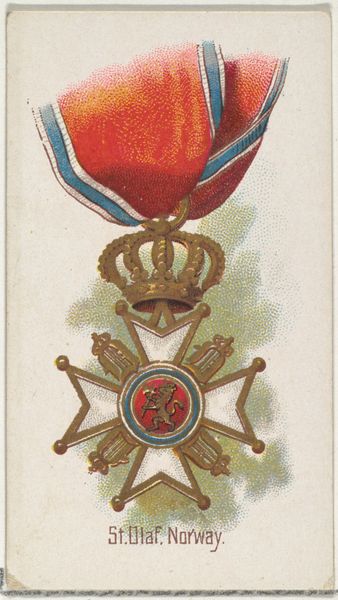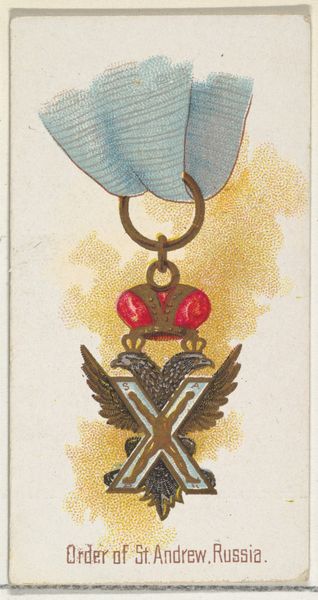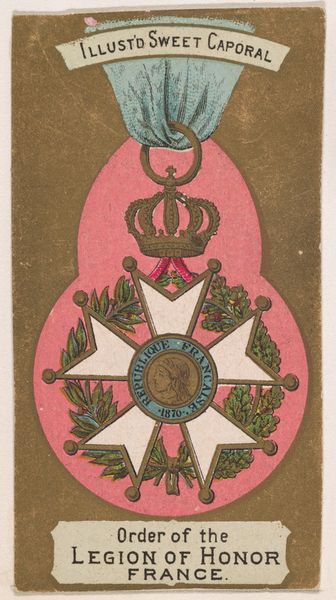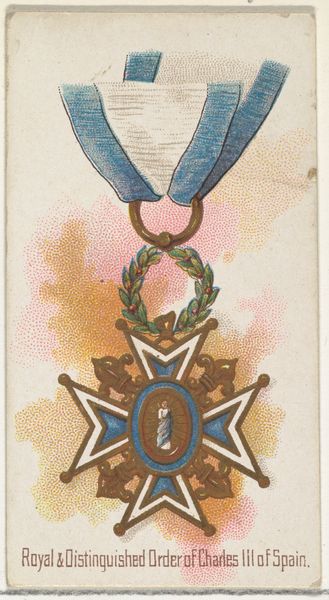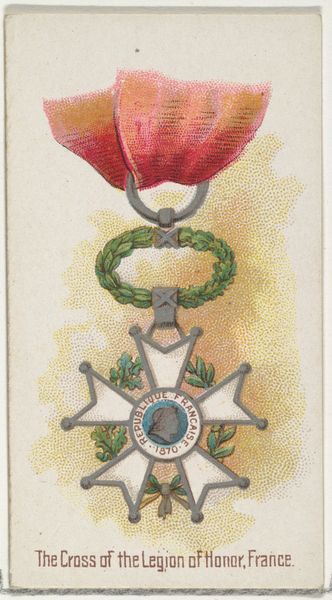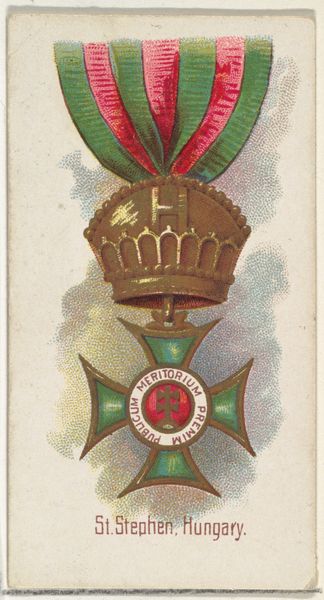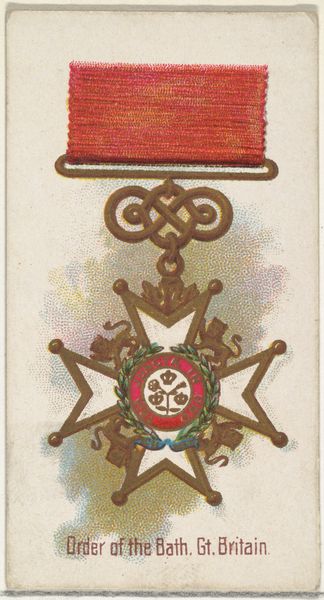
Order of Merit, Prussia, from the World's Decorations series (N30) for Allen & Ginter Cigarettes 1890
0:00
0:00
drawing, coloured-pencil, print
#
drawing
#
toned paper
#
coloured-pencil
# print
#
coloured pencil
#
decorative-art
Dimensions: Sheet: 2 3/4 x 1 1/2 in. (7 x 3.8 cm)
Copyright: Public Domain
Editor: This chromolithograph from 1890, "Order of Merit, Prussia" by Allen & Ginter, it's really quite delicate. It’s made with colored pencil, drawing, and print. The ribbon detail almost seems tangible, but knowing it was mass-produced as a cigarette card complicates that feeling for me. What can you tell me about this? Curator: It’s intriguing to consider the context of its creation. Cigarette cards were essentially advertising tools, mass-produced through industrial processes. Examining the materials – the paper, inks, the printing techniques themselves – reveals a blurring of boundaries. It's no longer a question of solely artistic value, but economic and social currency as well. The 'drawing' and 'coloured-pencil' tags are interesting, as they seem to soften and imbue value into an industrial product. Do you think it challenges our traditional view of art versus commodity? Editor: Absolutely! It's interesting how the aesthetic quality, the “art,” is used to elevate the product. It also speaks volumes about the culture if everyday ephemera celebrated a hierarchical order like that of Prussian merit. It's an odd collision. How might that hierarchy show up within the materials themselves? Curator: Consider the labor involved in creating both the original design and its mass-produced copies. How does the relative value of the materials used -- the quality of paper, the pigments in the inks -- reflect societal values and power structures? Was 'toned paper' selected to mimic expensive artistic paper? By understanding the methods, the labour, and resources needed, it helps expose a system where everything is connected to hierarchies and access. What would you take away from our discussion today? Editor: I see it now, beyond just the image of the Order itself, the card becomes a tangible record of how social hierarchies were both reinforced and commodified through production, circulation, and consumption in mass culture. I learned that it's not merely art, but part of a larger capitalist system!
Comments
No comments
Be the first to comment and join the conversation on the ultimate creative platform.

